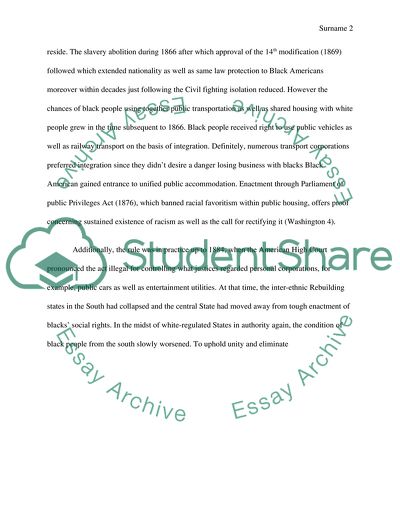Cite this document
(“Racism in America (the zeitgeist) around year 1890-1920 based on the Essay”, n.d.)
Racism in America (the zeitgeist) around year 1890-1920 based on the Essay. Retrieved from https://studentshare.org/history/1699237-racism-in-america-the-zeitgeist-around-year-1890-1920-based-on-the-book-give-me-liberty-by-foner-chapter-17-18-and-19-only
Racism in America (the zeitgeist) around year 1890-1920 based on the Essay. Retrieved from https://studentshare.org/history/1699237-racism-in-america-the-zeitgeist-around-year-1890-1920-based-on-the-book-give-me-liberty-by-foner-chapter-17-18-and-19-only
(Racism in America (the Zeitgeist) Around Year 1890-1920 Based on the Essay)
Racism in America (the Zeitgeist) Around Year 1890-1920 Based on the Essay. https://studentshare.org/history/1699237-racism-in-america-the-zeitgeist-around-year-1890-1920-based-on-the-book-give-me-liberty-by-foner-chapter-17-18-and-19-only.
Racism in America (the Zeitgeist) Around Year 1890-1920 Based on the Essay. https://studentshare.org/history/1699237-racism-in-america-the-zeitgeist-around-year-1890-1920-based-on-the-book-give-me-liberty-by-foner-chapter-17-18-and-19-only.
“Racism in America (the Zeitgeist) Around Year 1890-1920 Based on the Essay”, n.d. https://studentshare.org/history/1699237-racism-in-america-the-zeitgeist-around-year-1890-1920-based-on-the-book-give-me-liberty-by-foner-chapter-17-18-and-19-only.


